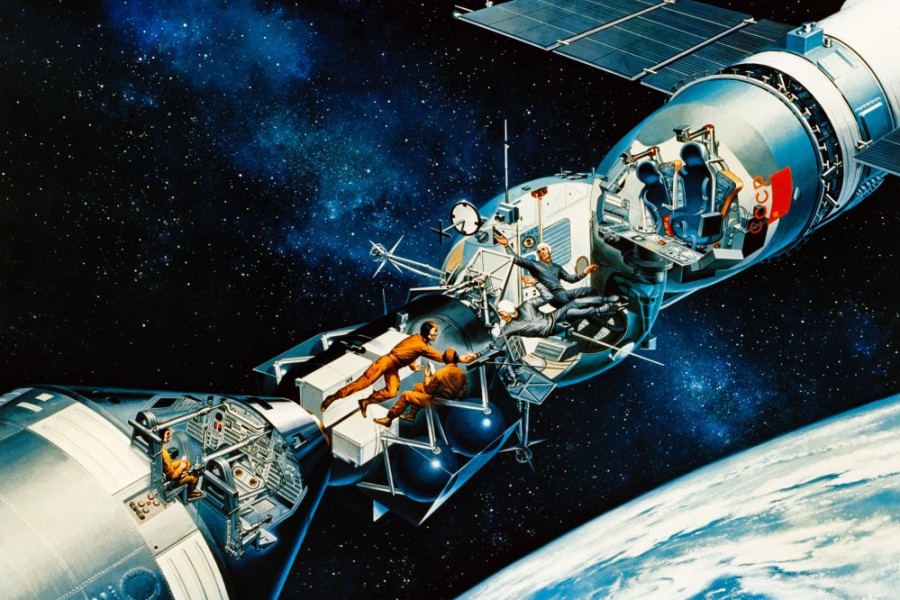- Space
- 1 year before
Apollo-Soyuz Test Project and Cooperation in Space
The Apollo-Soyuz Test Project (ASTP) is the project in which the United States and the Soviet Union performed a historic rendezvous in 1975,
-

- 1 year before
- Category: Space

Significance of the Apollo-Soyuz Test Project
Amidst the Cold War tensions of 1975, space exploration witnessed a pivotal moment: the Apollo-Soyuz Test Project (ASTP), the first joint space mission between the United States and the Soviet Union. This mission demonstrated to the world the capabilities and willingness of the two superpowers to collaborate in space endeavors.
Project Goals and Technical Details
The primary objectives of ASTP were to develop compatible space hardware, test crew interoperability, and provide opportunities for the mutual advancement of each nation's space technology. The project involved a rendezvous and docking in space between the U.S. Apollo spacecraft and the Soviet Soyuz spacecraft.
Extensive technical preparations were required for this rendezvous, with American and Soviet engineers working diligently to develop a docking mechanism. An international docking system was designed to allow each system to interface with the other and enable astronauts and cosmonauts to safely transfer between the two spacecraft.
The Historic Apollo-Soyuz Rendezvous
Launched on July 15, 1975, the Soyuz-19 mission was followed by the launch of Apollo on July 17. The two spacecraft successfully docked on July 17. After the docking, the astronauts and cosmonauts transferred between each other's spacecraft and conducted various experiments. This historic rendezvous marked a sign of détente during the Cold War era.
Impact and Legacy of the Project
ASTP stands as a significant example of scientific and technological cooperation that contributed to world peace. With this mission, the space race between the U.S. and the Soviet Union effectively ended, replaced by a spirit of collaboration. ASTP paved the way for future international cooperation in space exploration and served as a foundation for subsequent space missions.
Summary Table of Key Project Data
ASTP propelled space exploration to new heights and established a solid foundation for cooperative endeavors to come. By demonstrating that space exploration could be a vehicle for peace and progress, this project remains etched in history as a symbol of international collaboration.





